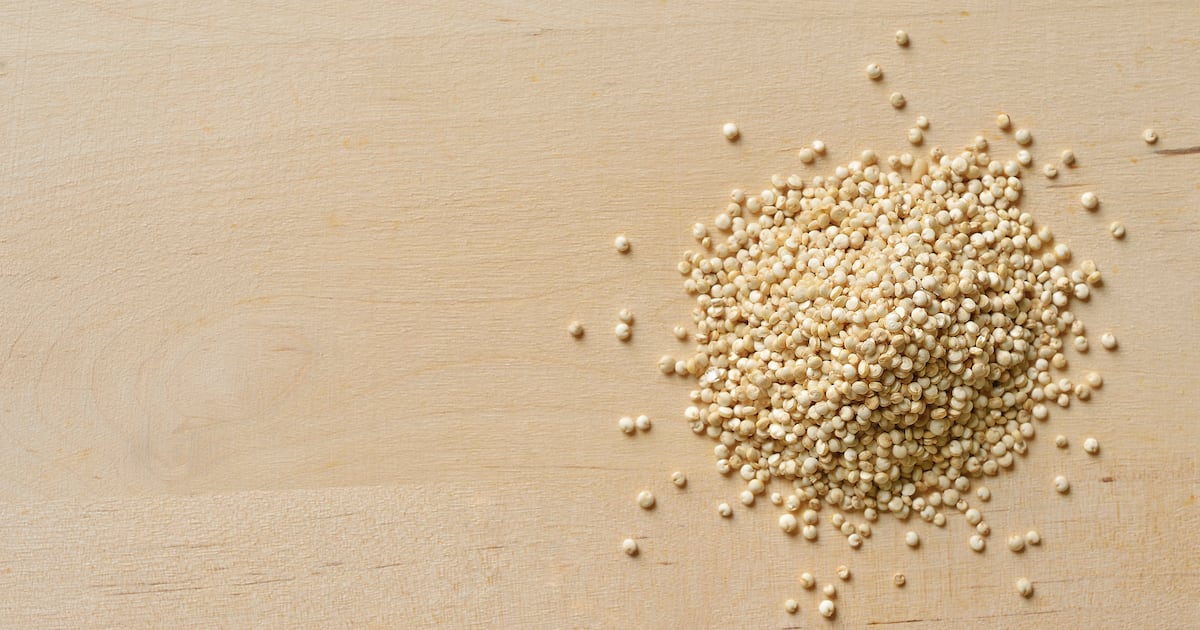
Lucas Meyer Cosmetics by Clariant has developed Pickmulse, a quinoa-starch-based Pickering emulsifier, following extensive research into natural emulsification processes.
Pickering emulsions, as defined by researchers, utilize “solid particles alone as stabilizers, which accumulate at the interface between two immiscible liquids (typically denoted as oil and water phase) and stabilize droplets against coalescence,” and are commonly used in cosmetic and personal care products.
This innovation stems from a need for stable, surfactant-free emulsions that meet modern formulation challenges in cosmetics and personal care.
We spoke to Amandine Werle, Marketing Specialist; Aurélie Trunet, Product Line Manager Functional Ingredients; Christelle Roy, Formulation Project Manager; and Lucile Raffray, R&D Project Leader at Lucas Meyer Cosmetics by Clariant, to learn more about the R&D process behind the ingredient launch.
Scientific foundations and R&D process
The research leading to Pickmulse was driven by academic studies on Pickering emulsifiers and the functional potential of quinoa starch. “Pickering emulsifiers are increasingly sought after in the market due to their excellent skin safety profile and growing consumer demand for natural and sustainable solutions,” said Raffray.
Building on existing scientific and academic research, the R&D team identified quinoa starch as an intriguing option to develop Pickering emulsions as “its small particle size enables the formation of stable emulsions while delivering remarkable sensory benefits,” she explained.
The subsequent industrial development process to produce a functional ingredient for cosmetic formulations required optimizing particle size, ensuring compatibility with various formulation systems, and validating emulsification performance under different conditions.
Formulation challenges and stability testing
Developing a Pickering emulsifier that balances stability with ease of formulation was a key challenge. “Unlike standard emulsifiers that rely on surfactant molecules, Pickmulse uses particles to stabilize emulsions, creating a fundamentally different mechanism of action, which allows the creation of emulsions with a high level of stability,” Roy shared.
The research team established that the ingredient requires only 5% to emulsify a 20% oil phase, enabling formulations with lower oil concentrations while maintaining performance, she confirmed.
Stability testing also played a crucial role in the development process, ensuring that Pickmulse maintained its emulsifying properties across various pH levels, temperatures, and formulation types.
Lucas Meyer Cosmetics by Clariant researchers focused on ensuring its compatibility with industrial-scale production without altering standard processing times, speeds, or equipment requirements.
Impact on skin and microbiome considerations
Pickmulse’s interaction with the skin barrier and microbiome was also a significant area of focus during the development process. “When applied, Pickmulse respects the skin’s natural lipid layers—often referred to as the ‘mortar’ between skin cells that supports the barrier function,” noted Werle.
“Unlike surfactant-based emulsifiers,” she added, “it does not disrupt this essential structure, helping to preserve the skin’s integrity and resilience.”
Microbiome studies were conducted to assess whether the emulsifier affected the natural balance of skin microorganisms. The R&D team concluded that “it avoids disturbing the membranes of microorganisms naturally present on the skin, which are now widely recognized as critical to maintaining skin health,” Werle explained.
Exploring sensory and neurocosmetic research
Another area of research focused on the sensory experience of formulations using Pickmulse.
“Despite their potential, few Pickering emulsifiers on the market achieve the desired balance of stability, sensoriality, and visual appeal, often due to limitations associated with particle size,” said Raffray, but “Pickmulse overcomes these challenges with its optimized small particle size, enabling the creation of emulsions that not only exhibit exceptional stability but also deliver a superior sensory experience.”
Trunet explained that a neurocosmetic study using functional MRI (fMRI) imaging was therefore conducted to explore how formulations using Pickmulse affect the brain’s response to touch.
“The study revealed that a gentle touch on skin treated with a Pickmulse-based emulsion activated key areas of the brain associated with positive emotions and the reward system more significantly than emulsions made with conventional benchmarks,” she shared.
Encapsulation and functional benefits
Beyond emulsification, Pickmulse was studied for its encapsulation capabilities, providing an added functional benefit for formulators.
Pickmulse’s quinoa start ingredient gelatinizes upon heating in water, Trunet said, which enables a transformative encapsulation process resulting in microcapsules. “These microcapsules serve as a protective barrier,” she described further, “shielding sensitive lipophilic ingredients—such as retinol, vitamin A palmitate, coenzyme Q10, or even high-value unsaturated oils—from oxidative damage and UV degradation.”
Researchers also evaluated how encapsulated actives release upon application, improving their delivery and efficacy. The ability to encapsulate high-value cosmetic actives within a standard formulation setting, Trunet offered, provides an alternative to external encapsulation processes, potentially reducing production costs and simplifying development workflows.
Sourcing and sustainability in R&D
A critical aspect of Pickmulse’s development was ensuring responsible sourcing and sustainability. “This sourcing is fully aligned with our commitment to supporting local economies in the quinoa crop’s endemic regions,” said Trunet.
“To further enhance our positive local impact,” she clarified, “we have partnered with the PROINPA Foundation, a Bolivian organization dedicated to promoting technological innovation for sustainable management of Andean grains and a more resilient local economy.”
The company collaborated with researchers and agricultural specialists to optimize quinoa farming techniques, ensuring higher yield quality while maintaining ecological balance.
Studies were also conducted to assess how different farming practices influence ingredient quality and how the raw material could be processed efficiently without compromising sustainability.
Industry reception and future research
According to Lucas Meyer Cosmetics by Clariant, beauty industry professionals have responded positively to Pickmulse’s research-driven approach. In particular, formulators and early adopters have responded favorably to the ingredient’s “ability to simplify the formulation process,” noted Trunet.
Looking ahead, Lucas Meyer Cosmetics by Clariant will continue to explore additional applications for Pickmulse and potential optimizations to its formulation.
The company is also investigating further neurocosmetic studies and exploring expanded encapsulation capabilities to broaden its potential uses within the cosmetics industry, the team confirmed.

